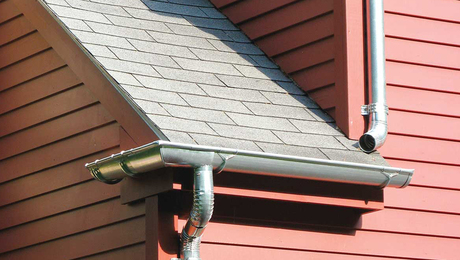My neighbor comes over last Saturday wanting me to help him hook up a generator. We live in Delaware and the power was out all over the place from Isabelle.
It all comes down to a Neutral question. The details are as follows,
He wants to back feed a sub panel in his garage. The sub is installed correctly with an isolated neutral back to the main panel. The generator is an 8000 watt Honda with a four prong, 120/240 volt, 30 amp receptacle and it has it’s own breaker. When I got there he had a 10-gage 3-wire cord tied to the sub panel and plugged into the generator. He used the four-prong plug that came with the set, but only used 3 wires, hot 1, hot 2, and ground and they were hooked up accordingly in the sub panel. In effect he ignored the neutral wire between the gen. set and the sub panel. AND YES THE MAIN BREAKER IN THE SERVICE ENTRANCE PANEL WAS TURNED OFF. Now he wants my blessing cause “I wired my own wood shop and it passed inspection”
At this point I don’t have anything to say to him but good luck cause I don’t know if it’s safe or not. Well he fired it up and it worked fine, ran his fridge/freezer. Sump pump, and so on. My mind says this was a clean safe set up but I’m no electrician! I’m all for using a proper transfer switch but that wasn’t happening on Saturday morning in the middle of a huge black out.
So, no neutral safe, or did he take a huge chance?
Let the beating begin
Thanks Bill
Discussion Forum
Discussion Forum
Highlights
"I have learned so much thanks to the searchable articles on the FHB website. I can confidently say that I expect to be a life-long subscriber." - M.K.
Fine Homebuilding Magazine
- Home Group
- Antique Trader
- Arts & Crafts Homes
- Bank Note Reporter
- Cabin Life
- Cuisine at Home
- Fine Gardening
- Fine Woodworking
- Green Building Advisor
- Garden Gate
- Horticulture
- Keep Craft Alive
- Log Home Living
- Military Trader/Vehicles
- Numismatic News
- Numismaster
- Old Cars Weekly
- Old House Journal
- Period Homes
- Popular Woodworking
- Script
- ShopNotes
- Sports Collectors Digest
- Threads
- Timber Home Living
- Traditional Building
- Woodsmith
- World Coin News
- Writer's Digest



















Replies
Not a good idea.
The only way this could have worked is that the ground and neutral are bonded at the generator. What was happening, then, is that the neutral current was flowing from the sub to the main panel, across to the ground at the main, over the ground wire to the sub, and then to the generator. This is bad - you never want to intentionally have current flowing through the grounding conductor system.
What would have been worse is give the ground and neutral were not bonded at the generator. Then some of the 120V branches could have wound up with as much as 240V on them, and other weirdness.
Beat Beat Beat
Very bad idea. I got my Makita battery charger fried because somebody didn't connect the neutral. He's only lucky he didn't fry anything of his which is too bad because he deserves to have a few appliances release some black smoke. As was explained in the previous post, the neutral/ground bond at the main panel saved the day.
Beat some more.
Just turning off the main breaker is not enough. This should be very illegal - like attempted murder [which it is]. Ask your local utility and be sure to give them his name and service address.
~Peter
The countdown begins - 290 days.
I am not an electrician, but very interested in this question and your reply.
Is it not true that the main box neutral and ground busses are normaly connected together and that a simple inspection of the main box could have verified this, and are these busses not also connected to a local grounding rod near the main box? And that if this arrangement is existing, and the main box breaker is open, the attached generator should not pose a dangerous condition to working lineman? I have also not seen any mention of a grounding rod attached to the generator, if I remember right, they all require one. At the very least the meter should have been pulled if there is any doubt as to a generators operation.
I am just curious, not looking for a fight, a linemans life is worth a lot more than a bunch of frozen steaks. I just want to understand how I can best protect the lineman first, and 15 cu-ft of expensive meat last, should I be placed in an extended outage situation. BTW what are your qualifications with respect to this subject?
Please, I don't want a fight, or a rant. Just info as simple as can be written for us nail bangers.
If you are just making plans in the event of an extended outage, then plan to do it right! Purchase a tranfer switch, either auto or manual, and have a qualified electrician install it for you.
like you said a couple of pounds of meat is not worth a linemans life. The cost of a tranfer switch is also a lot less than a linemans life.
Dave
I really want to keep this thread alive, as I have a good friend who works as a lineman, and do alot of DIY wiring on my own place.
I agree with your statement: "Just turning off the main breaker is not enough." , but like another poster, would really like to know why. Someone tell us if this is correct:
Seems to me that as long as the main breaker is open, there is no way that you could back feed into the grid. Problem, of course, being that as long as the generator is running and the only defense is the open breaker, the POTENTIAL for a backfeed situation is there, as anyone could walk up and close the breaker....if a lineman was working on bare wires at that moment...anywhere up the line, thinking they are not live, he doesn't get just 240, he gets a huge multiple of that as the transformers that are between him and the unprotected generator come into play. Thus the necessity of an approved transfer system that absolutely and automatically locks out all potential for back feed.
Do I have that right?
My lineman buddy had an interesting exchange with a farmer who was using a generator without a transfer switch after a big ice storm ~10 years ago. His crew was out doing repairs at night...no yard lights on anywhere...when they notice this one farmplace with it's lights on. So they drive up, talk to the farmer, look at his generator setup, tell him he's running power back up through the lines, farmer gives them some lip. So once they get power back into the lines...they could have told the farmer to unhook his generator...but instead just turned the power on and smoked the guy's generator. Mind you, they had been running 18 to 20 hours a day for a few days by this time.
Anyway, with all the ads for generators you see on TV, and the general (often misguided) DIY movement, this subject deserves more attention than it seems to be getting.
You're correct. "the POTENTIAL for a backfeed situation is there, as anyone could walk up and close the breaker...." is the issue. A transfer switch prevents this from happening and is absolutely necessary.
Does the transfer switch actually sense when the generator is feeding and WILL NOT close back to the grid unless the generator is off?
I put in an air conditioner disconnect, the kind where you take the contacts OUT to disconnect, for a disconnect to my presure tank/well pump, so whenever someone needs to work on that circuit, they can take the switch out and keep it with them to prevent someone else from walking up, "hey no water...well look at this, the switch is off"
There are two types of transfers switches, manual and automatic.
The basic manual one is just a double pole, double through switch. That is the load can ONLY be connected to the generator, or ONLY to the powerline.
That automatic ones have are the same, but use a relay instead of the manual switch (and are usally combined with a generator with automatic start).
Thanks for your response...hopefully this thread does some good for the pros that keep our power coming!
wow!
Barro, your explanation makes perfect sense to me now! So what if he HAD connected the neutral wire from the genset to the sub panel? Bond the generator or not?
The thing that really hurts my brain is this, he is feeding a sub panel with an isolated neutral back to the service entrance where the neutral and ground are bonded together. Does this ISOLATED NEUTRAL/ SUB PANEL thing make a difference? Wouldn't that put the main bond at the other end of the power supply? Do we not bond the genset now?
I'm with oldlou and johnnyd on this one, not looking for a fight but just want to understand.
Just for the record I used extension cords at my house, just like Bosshog.
Let's keep this going and maybe learn something?
Thanks, Bill
We keep talking about potential actions of others which could cause energizing a circuit and hurting someone. This potential exists in all industries including the power company's transmission and distribution system. How then do we not hurt people every day because a potential was realized? What is universally used is a program called "the red tag system". A tag is attached to the open breaker which states "danger, do not operate" and idicates who to contact with any questions concerning why the breaker should not be touched. This is the system which is used to prevent the utility's system operator from energizing lines being worked on by their own men. Why can't this same method be used within our homes? Known dangers and risks can be controlled if we want to take preventive actions.
My house was wired by a T&D supervisor for the local power company. Not a young kid with a new degree, but an old timer who started before there were bucket trucks. He knew exactly why I wanted a 50 amp 4-prong plug installed in the garage. His only advice to me was to make sure that the main breaker was open before a generator was connected. This man is not someone who minces words, and if he had any deep feelings about something, he would let me know them in a very direct way. This directness is one of the reasons why I hired him and his crew.
Just to show that all of the statements to get a transfer switch has got me thinking about adding one, how would a switch be installed with my particular arrangment? The power company's lines come in underground, run up the side of the house to the meter box, out the back of the meter box thru the wall for 2-3 ft to the main circuit breaker box. A 50 amp, 230 volt, 4 conductor, cable then runs about 50 ft to a 4 prong receptacle in the garage. It is important to note that this 50 amp cable also supplies the power to my shop building.
As I stated in a previous post on this thread, I am not looking for a fight or a rant. I, and I'm sure many others, need specific advice and details of how and why something should be done. Pro electricians, this is your chance to show us your stuff.
For use in a typical home situation with a fairly small emergency generator, a power transfer switch controls only a subset of electrical outlets that are considered most critical to have energized in a power outage. The transfer switch controls - or may act as - a subpanel. The circuits to be energized in an emergency then go to this subpanel. The transfer switch uses standard commercial power to energize the subpanel during normal times and then is switched to the generator to energize the panel during power outage.
Transfer panels can be automatic or manual, but in a normal home emergency power setup will be manual. Only if you have an auto-start generator would you typically want an automatic transfer switch. Most of us don't have those.
My own transfer switch, which I haven't installed yet, is only 30 amps. I will thus have to be very selective as to which circuits I want connected to that switch. You will probably want to coordinate the size of the transfer switch with the capacity of the generator, but in my case I have a small generator and don't need a lot of power when the commercial grid goes down. With the few generators I have owned, I have found their power ratings to be a bit optimistic so you probably want to go a little easy on what you plan on hooking up through the transfer switch.
I found the manual transfer switches to be surprisingly pricey - I think the 30 amp, six circuit switch I have originally listed for around $300 (although I got it at about 80% off). I haven't priced the automatic transfer switches, but I assume they would be really up there...
A fairly general overview of hooking up a transfer switch:
http://www.energy.ca.gov/distgen/interconnection/equipment.html
A couple of sites listing prices of transfer switches (the Coleman seems considerably less money for the capacity than most I have looked at)
http://www.cvfsupplycompany.com/colhomgentra.html
http://www.electricgeneratorsdirect.com/catalog/default.php?cPath=21
FIW the "red tag" system is no longer used 1005 of the time in transmission and distribution of electric power. It is only allowed in switching stations that are manned by qualified people.
We in the electric utility business must now comply with OSHA lockout/tagout procedures for almost all energy sources. In most cases a tag is not enough. The device or circuit must be locked with an approved lock hardware that is designed for that purpose. An explanation tag is included with the lockout kit and tells anyone who and why the energy source is out of service. The only one that can legally remove the lock is the person that put it in place or thier authorized representative. A supervisor may have a superisory key to the lock, but can not use it without thepermission of the person that placed the lock in service.
The question about the isolated neutral and no connection to the generator isstraight forward. The bonded ground/neutral in the generator was using the subpanel ground and ground rod as the nuetral and going to ground through the driven ground rod. Keep in mind that aneutral is a current carrying conductor. A ground is not a current carrying conductor unless there is a fault to ground.
More later.
dave
You can argue this question all day and if someone gets hurt who's fault is it?
Go to Home Depot and by a transfer switch for $100 and install it at the main panel. Its not rocket science. Connect those circuits that you want to be powered by a generator. Use an outdoor plug or an extension cord and power it up. If your Home Depot doesn't have a transfer switch, let me know and I will go out and fed ex you one from Illinois."Now here at the Rock we have two rules. Memorize them until you can say them in your sleep. Rule number one: obey all rules. Rule number two: no writing on the walls." Barney Fife
Marv
Here's one way to think about why a transfer switch is necessary...if you don't have one, and it's 3am and there's a raging thunderstorm going on (usually the kind of situation where you need to hook the generator up) you may or may not remember to shut off the main breaker after you've just crawled out of bed half asleep. Or, if you're not around and your significant other or your visiting brother-in-law tries to hook it up, they may not know everything that has to be done.
Something that hasn't been mentioned yet in this thread is that if you own a generator you should test it periodically, say once a month or so, keep it serviced, and make sure the fuel tank is full. If you think about it, generators usually sit there for months on end but are suddenly expected to instantly start and run full bore. Also, running it periodically will use up the fuel that otherwise goes stale just sitting there in the tank.
Typically, a permanently installed generator set will have a battery charger (the kind that keeps the battery topped up but doesn't overcharge) and a block heater plugged in all the time, to make sure it's ready to go when you need it. It's not a bad idea to do the same for a portable unit, especially during winter months.
So we all agree transfer switches are the best thing since sliced bread and, barring a transfer switch, the obvious, safe way to use a generator is with a mess of heavy-gauge extension cords and a good ground.
But, from a theoretical persepctive, I have a question about the back-feed hazard to lineman. IF 1) your generator voltage goes back on the line and 2) IF it goes backward through a TX, then high voltage could exist on the transmission lines. BUT 1) everyone else served by your transformer would suck down the voltage on the line and more so if 2) many transformers were energenized and supplying many customers with power.
Seems like if a 3000-watt Homelite generator can energize the whole neighborhood, then the power company would use one in each town instead of those big steam turbines, hydroelectric dams and nuclear power plants. (that's a joke).
If even one other house is energenized by your generator, wouldn't the generator C/B pop instantly - fridge, lights, HVAC blower, computer monitor and anything else that got left on would be sucking current.
So I agree there is a theoretical risk. But unless it is the power drop to your own house that blew down, how can one generator threaten a lineman many blocks away?
Again, transfer switch good. Backfeed bad. But how bad is it?
David Thomas Overlooking Cook Inlet in Kenai, Alaska
David
Where is the break?
Around here went we have major ice storms there will multiple, multiple breaks in the lines.
They start looking for the major breaks and fix them and try to clear the lines.
If that is not sucessfull they will go to all the drops and remove all of them that have clearly fallen. Then try again.
So you never know who are what will be on the high tension end of that line.
I think that you are right if the break is a distance and you have a number of other loads on the line.
Oh Dave, there you go inserting a high degree of logic into this theroretical discussion. Our main activity down here in the lower 48 is to build defenses to prevent some lawyer from making our assets his assets.
Do they have a bounty on lawyers up there? It's to late for us, you may be our last chance to save the old USA.
Lou: You're right, not a bunch of lawyers up here and many pass themselves off as something more productive.
Bill: I agree that the break could be anywhere and therefore a proper transfer switch or the extension cord approach should be done.
PM22: "diluted" is a bit of vague term to me (unless we are talking about preparing a chemical solution or using Amway products). I tend to think of voltage losses and current drain or use V=IR and P=IV repeatedly. "takes only a few milliamps to stop the heart" is sort of true. 8 milliamps is one figure I've seen. But that is the current through the chest, not the current in the wire.
Example: I have here in my hand a 1.5 volt AA alkaline battery. Short-circuit current of about 2 amps. I'm going to touch both terminals at the same time. . . . . I'm still here. Now I'll lick my fingers and do it again. . . . . Still here. Hmmmm. Maybe it isn't only a few milliamps that does it. Maybe it is a combination of amperage, voltage, resistance of the skin, and the current path through the body.
My point is not that there is no risk to lineman. Obviously there is because we can imagine break locations that would create 120/240 or even high-voltage hazards. My point is that most improper generator use does not kill most lineman. Just like shooting a gun in city limits usually hurts no one. But a few people do die each year. So it is against the rules. And properly so.
David Thomas Overlooking Cook Inlet in Kenai, Alaska
"My point is that most improper generator uses do not kill linemen."
Not being smart or antagonistic Dave, but we lost a lineman eigth years ago from just such improper generator use. It was not a HO hookup however, but a business that did not want to lose the contents of the walkin cooler in the event of an outage. The lineman was on the ground when he picked up the hot wire hanging from the pole with the transformer for the business on it. The circuit feeding to the transformer was still locked out by our load dispatcher and the crew had just restrung it from a half mile away. It was 1:00pm and there was no indication that there was any power on in the business. The owner of the business had even interrupted the crews lunch to bitch them out about not getting him hooked back up before thay stopped to eat. The owner never said a word about having a generator running and they could not hear it over the noise of two bucket trucks idling.
I don't have any tolerance for haywired generators or anything else that puts anyones life at risk.
You are correct about the path to ground and the low amperage,5 miliamp, that will kill. However high voltage can also kill. It cooks internal organs, burns victims, and exit the body on its' way to ground with enough explosive force to dissmember extremities.
I am a "line walker" for the utility company I work at. Durring and after storms I walk lines to locate outages and keep the public safe from downed power lines. It is scarey as hell at night in the midlle of a major storm to be trying to locate a downed line. The last thing I want to have to worry about is some HOs generator back feeding his downed service line as I walk through his yard to check the overhead lines. My job is tough enough. I am out there to protect the public from electrical hazards, but I have also been trained to not put myself at risk. HO generators are a threat to me and my coworkers if improperly installed.
Agian, I do not mean for this to sound antagonistic or even to be a rant. I just want everyone to know that the risk are real.
Dave
Dave,
I don't take your post as antagonistic at all. Back when I was teaching CPR in an indrustrial setting, I had two different students who had aquired new nicknames (i.e. the The 60,000-volt Kid, etc). Obviously they were lucky to still be around (not generators, but regular transmission lines).
Even in this setting (Breaktime), some people are learning for the first time that generators having internal connections between neutral and ground. And details about transfer switches. The average homeowner could barely be trusted to plug a toaster into a generator without burning the toast (or something else).
Anyone have a sense of how much bad wiring was done in California during the Summer of Blackouts? I suspect that so many HOs and businesses were running around trying to cobble together a solution that many didn't call an electrician or pull a permit.
P.S. you have a scarey-ace job! When I see a live wire jumping around on the ground, I power down the computer and mist down the roof. But I don't walk TOWARDS it!
David Thomas Overlooking Cook Inlet in Kenai, Alaska
I have never understood this claim about 5 miliamp being a killer. Years back I blew a 15 amp fuse with the current going through me from one hand to the other, supposedly the killer flow path. I admit that I was very floppy legged after this event. My friend "neon leon" (they are everywhere) mixed it up with a 480 volt circuit and although he is very carefull now, he still, sort of, kids about it.
Are we the exception or is it the 5 miliamp case?
Lou, you know there are no garuntees regarding death from electricity. But if you think that taking 15amps once makes you superman, go right ahead.
But, to answer your lack of understanding, 5ma ac thru the heart muscle can kill you.
I personally think that advertising "current kills" instead of saying the less technically accurate "voltage kills" has put people at an unnecessary risk because without sufficient voltage there is not enough current.
1ma at 500,000vac will kill. 10,000 Amps available at 1 vac will not even be felt.
Walk across a rug and you can get a static spark that will leave your arm numb, yet the current can be measured in nanoamps (micro-micro amps, .000,000,000,001A)
A car battery will vaporize a 12ga wire short, but you can grab both terminals.
VOLTAGE KILLS
VOLTAGE KILLS
VOLTAGE KILLS
VOLTAGE KILLS
SamT
Hey don't get me wrong, It was not something that I want to do again. I am not a superman and every day I become less super. 500,000 volts! you just have to get next to it. Cool to listen to when the morning is damp.
"1ma at 500,000vac will kill"
For 10 cents I'll take 1 mA from 500 kV (or any other voltage) anyday, every second.
Sam, you usually have a very precise and technically correct response, but the above is bogus. 99% of humans will not even feel 1 mA.
However, 99.9999% of humans have a lower skin resistance than R=500E3/E-3, so subjectively, a 500 kV powerline is nearly always lethal 'cause the current is always going to be over an amp for more than a few micorseconds.
5 mA for 5 seconds is lethal to 0.5% of people, according to Dazeil's (sp) experiments in the 1950's (still the main source of electrocution data).
Also, if the shock is short (less than a second) data shows that the electrical shock needs to hit the heart during the T wave to be lethal (fibrillation onset). Somewhat of a lottery there, like a group of people getting hit by a lightning stoke and only some die instantly.
PS- would PETA ever croak about Dazeil, he fried literally thousands of sheep and pigs to get his data, as sheep and pigs have similar hearts to humans - you figure if democrat or republican 'hearts". <G>
a couple of charts from a EE course I used to teach.
It is better for the public to err on the side of caution, if not down right fear of electrical fault currents.
I pulled a 37 hour line walking stint last spring. At on house I found a guy setting in his garrage drinking beer with his tv and refrigerator running off of his generator. He was using extension cords, so at least I did not have to ask him to unhook it from his garage subpanel. The service mast to his house was torn off and the incoming lines were laying accross his back yard and chain link fence. He told me the line was dead, he had checked it with his meter! Lucky, lucky man. The fuse at the transformer had blown b/f he got out there to put his meter on the downed line. 6 hours ealier I had located a similar line and the fuse had not blown open. The chainlink fence it was laying accross was hot and the whole thing was humming.
In controled experiments I am sure the researchers are correct, but the best you can say about the real world is that each situation is different and unpredictable. I have a friend and coworker that survived a 4Kv hit with no lose of appendages, another took 7kv and has only half of one foot and none of the other. Different circumstances and different results. Two years ago a contractor lost two men when they cut a gound wire at a substation. One man cut the wire and got hit. The second,his father, jumped into the trench to save him. I never got the full story on how that ground had become energized enough to kill, but it happened.
Never,never assume you are safe around any electric lines. We have extensive safety equipment, training, and procedures, yet the electric utility indusry losses someone every year. Mistake are made, equipment fails and unpredictable stuff happens, and people die or are seriously injured.
The rule is "If it aint grounded, it aint dead".
Dave
The rule is "If it aint grounded, it aint dead". But, you might be.
SamT
I always though nano was 10 to the -9th and 10 to the -12th was pico.
Thanks for the update on the current red tag methods. Its been ten years since I left the industry and OHSA has been hard at work providing fool-proof methods to save the rest of us from the ever increasing numbers of fools.
There was a time when those who violated the simple red tag system would be taken out back to the intake structure and convinced that violating the system is not in their best interest. A second trip out back was always the last. I know, not very PC, but extreamly effective.
Thanks for your info. and associated web sites. I think that I have a much better idea of what these switches and associated sub-panels do, and importantly can't do. I would think that the PEPCO switch, described in the CA site,which is installed between the meter box and main breaker panel would work best for me ( read, cost effective). Pulling new cables back and forth to a sub-panel looks to be very spendy, and I would much rather have the ability to power-up anything than to be limited to only critical circuits. If I smoke my generator, well, shame on me.
If there any inventors out there, consider this. Why can't we come up with an optional main breaker switch, availible to those with generators, which would sense system voltage. When this voltage drops to zero, for say 5 seconds in order to prevent breaker operation during system blips, would trip the breaker and not permit the breaker to be reclosed until system voltage is restored. If we can produce GFI switches, which are infinitely more sensitive than the one I am proposing, why can't we make this one. Another feature for this switch could be a little light which would light up when system voltage is restored. I live in the boonies and don't have a neighbors yard light for indication that the power is back on.
Didn't see anybody mention the cheapest transfer switch, the common three way toggle switch - breaker to one side, generator bus to the other, common to the appliance line. 6 or so will keep you beer cold and steaks frozen.
Actually there is a cheaper one.
I have not priced them, but can't be more than a few bucks.
There are breaker interlock kits so that you can have two "main" breakers, but only have one on at a time.
But that is assuming that you already have both breakers and they can be arranged appropriately in the pannel.
"as anyone could walk up and close the breaker" You got that right.
The story is that the Dad decided one day to work on the Air Conditioner in the attic. So he flipped off the breaker and went to work. His teen-age son came home and his stereo wouldn't work. Knowing something about electricity, he investigated and discovered the main breaker was turned off. This was an easy fix. Viola! the music poured out like silken lemonade.
Later, there was a family question of "Where's Dad?" A couple of days later, a peculiar odor came wafting down from the attic access hole which elictitewd curiousity...
Then there is the sub-genius who can't figure out which circuit breaker has tripped so he flips them all off and then on. Including the ones which were off for a purpose.
As for the poster whose theory is that the generators output would be diluted by all the other connected houses on the block, I say phooey or, to be nice, nice try. It takes only a few milliamps to stop the heart. The 120/240 output of the generator gets transformed into maybe 16,000 volts by the utility's transformer. Maybe low amperage but still enough to kill.
Another point is ground rods. These are for lightning protection and to provide a path for instance if a high voltage [16,000 v.] line falls on a homeowners 240 servic line. Dirt is a poor conductor and that's why the green wires [Equipment Grounding Conductors] are used.
Another issue is that a typical portable generator is bonded internally between the ground and the neutral. If connected directly to a household power system, this would create a parallel path. Either the transfer switch should transfer the neutral or the internal bond in the generator should be removed.
Where is 4Lorn on all this?
~Peter
The countdown begins - 3 more days!View Image
Another point is ground rods. These are for lightning protection and to provide a path for instance if a high voltage [16,000 v.] line falls on a homeowners 240 servic line. Dirt is a poor conductor and that's why the green wires [Equipment Grounding Conductors] are used.
ENH.N.H.N.H.N.H!! Sorry wrong answer. You do not win the new car. A new casket, maybe?
The ground rods provide a ground potential reference for the system (0 V relative to earth) and to provide a direct short thru WIRES back to the breaker panel so breakers will pop before any body gets hurt.
Without an EGC, the hot side could short to the equipment chassis, and the breaker would not pop and the equipment would not notice it either. But you sure would if you touched the equipment.
Without the zero volt ground reference holding the neutral side at ground potential, there could be any conceivably voltage difference between hot and ground and between neutral and ground. Most probably the 16KV you mentioned, and not because the HV line broke. Imagine the sparks that would fly when you leaned over the merely damp counter to plug in the toaster.
There would still only be 120VAC difference in potential between hot and neutral so the ungrounded equpment would still operate fine.
DO NOT TRY THIS ANYWHERE!!!
You could, if you were really stupid, After the generator was running, and if the generator was totaly isolated from ground, connect the hot side to ground and the generator and the isolated from ground load would operate just fine, but DO NOT TOUCH THE GENERATOR OR THE LOAD while the hot is grounded. THE GENERATOR CHASSIS IS AT 120VAC compared to ground and will KILL YOU IF YOU TOUCH IT!!!
Nuf' yelling,
SamT
Pm22 Say's
"Another issue is that a typical portable generator is bonded internally between
the ground and the neutral. If connected directly to a household power
system, this would create a parallel path. Either the transfer switch should
transfer the neutral or the internal bond in the generator should be removed"
This is what I'm trying to wrap my brain around!
So if we UNBOND the gen set, can we safely back feed through that sub panel with the isolated neutral?
Great discussion guys!
Bill
"Either the transfer switch should transfer the neutral or the internal bond in the generator should be removed."
But doing so will also separate the neutral from the ground at the on-board receptacles of the genset, and you have to open up and modify the machine to do so, which I'm sure the manufacturers wouldn't think too much of. It's always seemed odd to me that the low-cost gen panels sold in the borgs and such (including Square D gen panels), when installed per the instructions, are not compatible with the generators (as-delivered), due to the parallel neutral/ground path thru the feeder (SDS and non-SDS at the same time; a violation).
It seems to be it would be easy enough for the generator manufacturers to provide a switch on the control panel to enable the on-board receptacles and make the bond while disabling 120/240V twistlock, or enable the 120/240V twistlock, disable the on-board 120V receptacles, and break the bond. Or something...Be seeing you...
Generators have an external grounding lug or bolt that should be bonded to the house ground rod thru a seperate green wire, or at the very least to its' own ground rod.
The house equipment grounding sytem will still work to protect people if this is done. The house neutral current conductor will also provide an isolated return to the breaker panel.
Any parallel return paths will only be in the conductors from breaker to generator.
With both breaker panel and generator neutrals and grounds bonded at both places the dual requirements of providing a zero volt earth reference and a safe way for accidental hot to equipment chassis shorts to be taken care of, things will be safe and will work fine.
SamT
In a situation like that, I wonder if it wouldn't have been better to run extention cords to the fridge, freezer, and sump pump rather than trying to wire it into the main panel.
Not as convenient, but easier and safer.
"Any government big enough to give you everything you want is big enough to take from you everything you have." [President Gerald Ford]
FHB # 128 had a pretty good article on generator installation.
My neighbor's auto-start 8 kW natural gas powered unit gets an automatic test every week. Most other autostart units I've seen are on bi-weekly schedules. I'm still trying to convince him he should load it up a little.
FWIW, Coleman recently added Honda powered units to their Powerstation line and the prices at Southwest Fastener look quite appealing - http://www.southwestfastener.com/productsColeman.htm
Eric S.
Edited 9/25/2003 9:32:28 PM ET by Eric Svendson
I just went thru this problem. Honda has put out a tech. bulletin for the removal of the 2" jumper wire now connected from the ground to neutral. Same problem gfi kept picking up the small current that was running via the jumper and tripping. Bottom line in the tech. bull. is that the gen comes osha wired for "field site use only" If it is to be used for a house the jumper must be removed and a new sticker placed on the gen to state such.
I have the techbull from Honda, it covers various models, I can't scan it but I can fax it to anybody that would scan it for posting here.
I'm running a sweet honda 12dag 12k whole house @ 50 amp 220v --87amp at 120v .